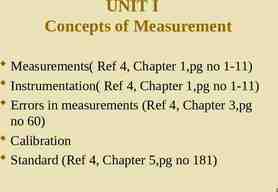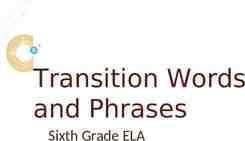VOCATIONAL REHABILITATION HISTORY 101
26 Slides598.09 KB

VOCATIONAL REHABILITATION HISTORY 101

Roots of Public Rehab The public rehabilitation program in America can trace its roots contrary back to World War I. During the time period of the 1900's-1920's, the United States was just starting to realize the obligation that it had concerning people with disabilities.

With the Industrial Revolution and World War I, America was rapidly changing and only in the beginning phases of understanding what people with disabilities had to endure and only really took responsibility for helping them when the veterans from World War 1, were returning with severe disabilities. The government eventually realized they had an obligation to help people with disabilities, not just the veterans returning from war. During that war, modern medicine allowed more injured soldiers to survive and come home with significant disabilities than ever before, but they couldn’t go back to their old jobs.

The Soldiers Rehabilitation Act of 1918 introduced a new concept of disability support, not just money to live on, but training for the injured veterans as preparation for new jobs matching their new abilities.

The new program was great as long as your physical disability met the requirements and as long as you needed the limited VR services the system offered. But, if you had some other kind of disability meet the requirements, such as seizures or intellectual/developmental disabilities, you were not eligible for any help. People with these disorders continued to live on charity from family, church groups, strangers or in a state supported institution.

World War II expanded the rehabilitation system even more when millions of soldiers went off to war. They left behind jobs that still needed to be done. So millions of women want to work to help out, but many unskilled jobs were still empty. To help fill those jobs, some amendments to the Rehab Act in 1943 expanded VR services to include people with mental illness and intellectual and developmental disabilities. This gradually doubled the number of people finding jobs through VR.

By 1943 . In response to comments from the public, the 1943 Amendments to the Rehabilitation Act also changed the kinds of services that VR provided, in addition to training and guidance, VR begin paying to correct certain disabilities including cataract surgery on eyes or bone surgery for limb deformities. VR also began paying for equipment, like hearing aids or wheelchairs. Anything that improved the ability of someone with a disability to find a job. The 1943 Amendments also allowed states to create separate VR agencies for people with blindness, if the states chose to do so.

1954 Amendments In the decades that followed as the economy grew and as doctors learned how to treat more serious disabilities, the process of VR became more complicated.

With the 1954 Amendments to the Act, the government started funding scientific research into disabilities and rehabilitation eventually leading to the National Institute on Disability and Rehabilitation Research (or NIDRR). These Amendments also significantly increased funding for the public rehabilitation system to match its growing popularity.

Post War VR Politically, VR was popular. VR agencies helped thousands of people, even if the program still did not reach everyone with a disability. There was a clear definition of the target group, people with disabilities who could return to work with help and a clear definition of success employment of those people.

1965 Amendments President Johnson used these to recruit VR into his Great Society Program. VR had been so successful finding jobs for people in need so to speak that the administration was going to expand its role.

Suddenly the term disability included drug abuse, alcoholism, repeat jail sentences, so called behavior disorders, public assistance and many other conditions that were not medical at all in short almost anyone who could not get a job could get help from VR. Because VR was operating offices in prisons, welfare offices and store fronts, the VR system that had once served thousands of people now served tens of thousands. This change quickly overwhelmed the system and VR officials had to streamline the process. Now applicants were processed and evaluated quickly while training choices were much more limited. VR services became less individualized and flexible. Rehabilitation became a mass production system.

At this point, VR helped many more people, but the people who needed the flexibility and individualization of earlier years people with the most significant disabilities often got lost in the shuffle. doing without. They have to go back to

Disability Rights Movement By this time, in the late 60s and 70s people with disabilities, advocates and family members had learned a few lessons from the Civil Rights Movement. lobbying and protesting about, among other things, this streamlining of VR. They began

1973 Rehab Act In 1973, Congress responded with a completely new Rehab Act. This Act directed VR to primarily serve people with significant physical or mental disabilities. Disability Rights Movement Meanwhile, the voices of those with disabilities and advocates continued to grow. They started a radical De-institutionalization Movement in the 1960s which pushed institutions to move people out into new group homes and residential care facilities in local communities.

1986 Amendments For people with the most significant disabilities these amendments shifted VRs focus away from jobs in protective places, like sheltered workshops. Instead, the amendments provided supports to help people adapt to work in typical jobs out in the community.

1992 Amendments These new amendments to the Rehab Act created a new Front Section which spelled out some concepts in a statement of definitions and principles. These amendments also created the State Rehabilitation Councils (SRCs), which are Citizens Advisory Councils in each state and territory, to increase the voice of consumers in the policy and operation of state agencies.

In addition, the 1992 amendments: increased the role of a consumer in planning his or her services; mandated a set of standards and indicators for monitoring agencies; required agencies to set minimum training standards for all VR counselors; speeded up the eligibility process; stated that agencies were to presume everyone with a disability could benefit from VR services; and agencies could not deny services to someone just because his or her disability was very significant.

1998 Amendments These amendments: increased supports for informed consumer choice in the VR process; streamlined some administrative requirements; increased the options to help consumers find high-quality jobs; required a partnership between the public rehabilitation system and other state and federal agencies to provide employment related services; included requirements for local cooperative agreements; the Rehab Act became Title 4 of the Workforce Investment Act; and The VR system still provide flexible individualized services to people with abilities who need more than the general public jobs.

Reauthorization Act of 2014 The Workforce Innovation and Opportunity Act (WIOA), which reauthorizes the Workforce Investment Act of 1998 (WIA) including the Rehabilitation Act through the year 2020, was signed by President Obama. In his comments, the President stated that WIOA “will help workers, including workers with disabilities, access employment, education, job-driven training, and support services that give them the chance to advance their careers and secure the good jobs of the future.”

WIOA is designed to strengthen and improve the nation’s public workforce development system by helping Americans with barriers to employment, including individuals with disabilities, achieve high quality careers and helping employers hire and retain skilled workers.

Title IV of WIOA amended title I of the Rehabilitation Act of 1973. This amendment brought about: New Performance Measures Pre-Employment Transition Services (Pre-ETS) WIOA Limitations on use of Subminimum Wage WIOA State Plans to be submitted every 4 years with updates after 2 years

GUIDING PRINCIPLES DO NOT CHANGE Throughout these changes, the guiding principles of the rehabilitation system have not changed. The belief is employment & productivity lead to independence and belief continues that independence is the right of every American citizen.

REMEMBER! YOUR COUNCIL SHOULD HAVE A GENERAL UNDERSTANDING OF WHAT VR DOES KNOW THE FEDERAL BENCHMARKS FOR PROGRAM EVALUATION FIND OUT WHO VR PARTNERS MAY ENCOMPASS UNDERSTAND WHY VR IS IMPORTANT KNOW THAT YOUR ROLE IS VALUABLE!

BE ENGAGED AS AN INFORMED VOICE ENABLING AND EMPOWERING INDIVIDUALS WITH DISABILITIES TO WORK AND TO LIVE INDEPENDENTLY SHOULD BE THE MISSION OF ALL VR AGENCIES

BE ENGAGED AS AN INFORMED VOICE Enabling and empowering individuals with disabilities to work and to live independently should be the mission of all VR agencies






